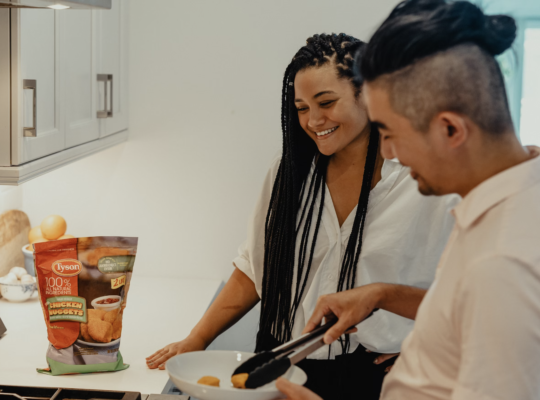
Attachment Styles is a term we hear quite often but what is it? Why do we behave the way we do in relationships? It often comes back to attachment styles—the emotional patterns we develop as kids, thanks to how our caregivers treated us. This idea comes from something called attachment theory, introduced by psychologist John Bowlby and built on by Mary Ainsworth. In simple terms, how you bonded with your parents or guardians as a baby impacts your adult love life. Let’s break it down!
The Basics of Attachment Theory
When we’re little, we’re hardwired to seek closeness to our caregivers. It’s not just about feeling loved—it’s also about survival. Mary Ainsworth’s famous “Strange Situation” experiment showed how kids’ attachment to their parents could be grouped into four styles: secure, anxious, avoidant, and disorganized. These styles are like a blueprint for how we handle closeness, trust, and conflict as adults.
Attachment Styles Show Up in Childhood
- Secure Attachment: If your caregivers were consistent and loving, you probably felt safe exploring the world. This builds confidence and emotional resilience.
- Example: You trusted they’d be there when you needed a hug.
- Anxious Attachment: Inconsistent caregiving might have left you feeling unsure. You clung to your caregivers, worrying they’d leave.
- Example: You cried extra hard to get their attention.
- Avoidant Attachment: If your caregivers weren’t emotionally available, you learned to rely only on yourself.
- Example: You stopped crying because no one was coming.
- Disorganized Attachment: If your caregiver was a source of fear, it was confusing. You wanted comfort but were scared to seek it.
- Example: You didn’t know whether to run to or away from them.
Attachment Styles in Adult Relationships
Fast forward to adulthood, and those childhood patterns often show up in your romantic life:
- Secure Attachment: You’re pretty chill. You trust your partner and communicate well. Love feels safe and fun.
- Traits: You’re dependable and open to intimacy.
- Fix & Manage: Keep fostering healthy communication. Be the partner who listens and shares openly.
- Anxious Attachment: You’re the overthinker. You crave closeness but worry about being abandoned.
- Traits: You might text a lot for reassurance.
- Fix & Manage: Practice self-soothing techniques like journaling or meditation. Talk to your partner about your needs without being overly clingy.
- Avoidant Attachment: You’re fiercely independent and avoid deep emotional bonds.
- Traits: You might ghost when things get too serious.
- Fix & Manage: Work on opening up in small steps. Acknowledge and share your fears about intimacy with your partner.
- Disorganized Attachment: Relationships feel like a rollercoaster. You want love but fear getting hurt.
- Traits: You might push partners away, then pull them back.
- Fix & Manage: Seek therapy to address past traumas. Build trust slowly and consistently with a patient partner.
How Attachment Styles Affect Relationships
- Communication Patterns:
- Secure people communicate directly.
- Anxious people overanalyze and may struggle to voice their needs.
- Avoidant people might shut down emotionally.
- Disorganized people may send mixed signals.
- Conflict Resolution:
- Secure individuals are collaborative problem-solvers.
- Anxious individuals might fear conflict and become overly accommodating.
- Avoidant individuals might avoid addressing issues altogether.
- Disorganized individuals might escalate or withdraw unpredictably.
- Emotional Intimacy:
- Secure people thrive in emotional closeness.
- Anxious people crave it but may seem needy.
- Avoidant people resist it to maintain independence.
- Disorganized people feel torn between wanting and fearing it.
Tips for Managing Relationships with Different Attachment Styles
- With a Secure Partner:
- Learn from their emotional stability.
- Communicate openly and build mutual trust.
- With an Anxious Partner:
- Offer consistent reassurance.
- Be patient when they seek extra closeness.
- With an Avoidant Partner:
- Respect their need for space but encourage gradual emotional sharing.
- Avoid pushing them into situations they’re not ready for.
- With a Disorganized Partner:
- Create a safe and stable environment.
- Encourage therapy for addressing underlying fears.
Can Attachment Styles Change?
Good news: your attachment style isn’t set in stone. Major life events, therapy, or a healthy relationship can shift your patterns. For instance, dating someone with a secure attachment style can teach you what safe love feels like. Counseling helps, too, by identifying unhealthy habits and creating new ones.
So, what’s your attachment style? Reflecting on it can be life-changing. Whether you’re securely attached or have some work to do, remember: growth is always possible. Healthy relationships start with self-awareness and a willingness to evolve. Here’s to finding love that feels as good as it’s meant to be!








[…] wounds from past relationships or childhood experiences can make vulnerability feel unsafe. Attachment theory teaches us that those with […]
[…] attachment style formed in childhood is influenced by the parent-child […]